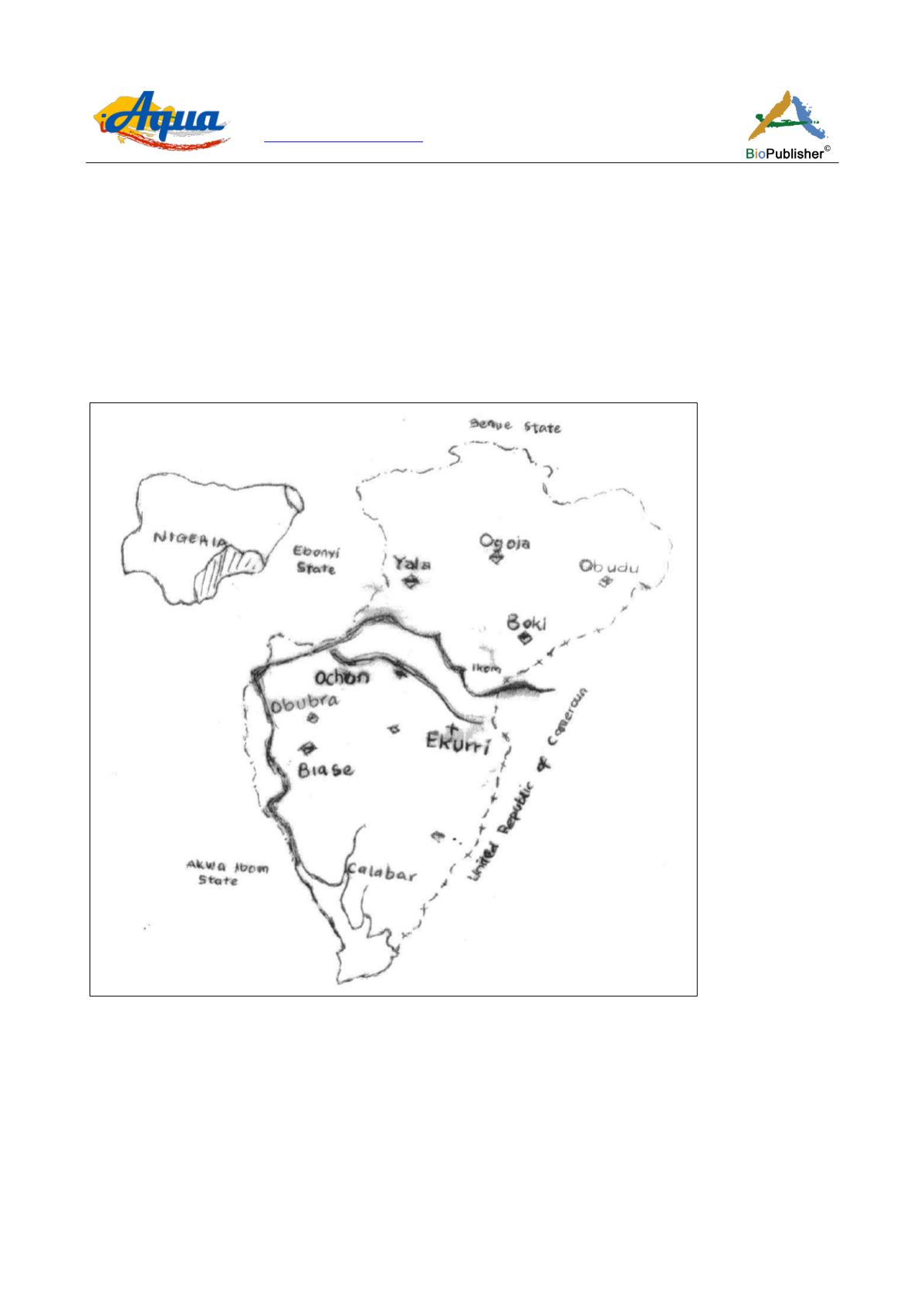
International Journal of Aquaculture, 2017, Vol.7, No.25, 166-173
168
The vegetation of the river is made up of dense growth of tall trees made of thick foliage. The foliage reduces the
amount of sunlight that gets into the river that in turn plays a part in the distribution of types of organisms in the
river ecosystem Due to the fertility of the Okpon River Basin; there is a high concentration of human population
along the River. Fishing activity includes the harvesting of
Mellitia cumingii
which is a source of animal protein
for the local population.
Samples were collected from three locations along the River as indicated in the map (Figure 1). Sampling was
done two times (in January and July of 2006) to include the two main seasons of the year (dry and wet seasons).
Concentrations were analyzed and average of both the dry and wet seasons found. The specimens were dissected
according to guides from Olayemi et al. (2012) to remove the tissues. These were preserved in pure H
2
SO
4
waiting for laboratory analysis of the metals (Khadse, 2010).
Figure 1 Map of Cross River State showing the location of the sampling stations as bold crosses (Ekurri, Nsin and Ochon) along the
river
The tissues were removed from preservative and soaked in water for four hours. These were washed in deionized
water repeatedly to rinse off the preservative. The samples were oven-dried (MAMMART) at 100°C and were
pounded in mortar to powder form. One gram of each sample was digested in 15 ml of nitric acid and 5 ml of
perchloric acid. The mixture was heated on a hot plate until it became solid. This was digested to a clear liquid
and made up to 100 ml using deionized water. Metal concentrations were measure using flame photometer (RP 7)
and atomic absorption spectro-photometer. Metals analyzed included Copper, Cadmium, Chromium, Iron,
Manganese, Nickel, Lead, Zinc, Calcium and Magnesium at different wavelengths as shown in Table 1.


